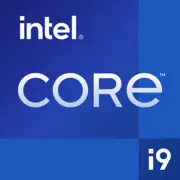Intel Core i9-13900KF

Intel Core i9-13900KF: Potenza Raptor Lake per professionisti e gamer
Aggiornato: marzo 2025
1. Caratteristiche principali: Architettura e prestazioni
Il processore Intel Core i9-13900KF è il modello di punta della linea di 13ª generazione, basato sull'architettura Raptor Lake. Questa è un'evoluzione dell'approccio ibrido di Intel: 24 core (8 Performance-core e 16 Efficient-core) e 32 thread garantiscono un'estrema multitasking. Il processo produttivo Intel 7 (10 nm Enhanced SuperFin) è ottimizzato per bilanciare efficienza energetica e frequenza.
Caratteristiche chiave:
- Turbo Boost Max 3.0 — overclock fino a 5,8 GHz sui core P.
- 36 MB di cache L3 — accelerazione nella gestione dei dati in giochi e applicazioni.
- Intel Thread Director — gestione intelligente dei carichi di lavoro tra i core.
- Supporto per PCIe 5.0 e Thunderbolt 4 per futuri aggiornamenti.
Prestazioni:
- Geekbench 6: 2974 (Single-Core), 20137 (Multi-Core).
- Nei giochi (ad esempio, Cyberpunk 2077 Ultra, 4K) il processore offre oltre 120 FPS in combinazione con RTX 4090.
- Per il rendering in Blender (scena BMW) il tempo si riduce a 2,1 minuti — il 18% più veloce rispetto all'i9-12900K.
2. Schede madri compatibili: Socket e chipset
Il processore utilizza il socket LGA 1700, compatibile con i chipset Z790, B760 e H770.
Raccomandazioni:
- Z790 (ad esempio, ASUS ROG Strix Z790-E Gaming, $350–$450): La scelta migliore per l'overclock, supporto DDR5-5600+, PCIe 5.0 x16 e fino a 4 SSD NVMe.
- B760 (ad esempio, MSI MAG B760 Tomahawk, $180–$220): Opzione economica con overclock di base e supporto DDR4/DDR5.
- H770 (ad esempio, Gigabyte H770 Aorus Elite, $150–$190): Per configurazioni da ufficio senza overclock.
Caratteristiche da considerare:
- Assicurati che la scheda abbia VRM 16+1 fasi per una fornitura di energia stabile.
- Per PCIe 5.0, scegli modelli con dissipatori sulle slot M.2 — ad esempio, ASRock Z790 Taichi.
3. Supporto della memoria: DDR4 vs DDR5
L’i9-13900KF supporta DDR5-5600 e DDR4-3200, ma con alcune considerazioni:
- DDR5: Migliore prestazione in attività ad alta larghezza di banda (ad esempio, rendering 3D). Un kit di 32 GB DDR5-6000 (ad esempio, G.Skill Trident Z5 RGB) costa tra i $120 e i $150.
- DDR4: Risparmio fino al 40% (32 GB DDR4-3600 — $70–$90). Adatto per i gamer se la scheda video è il collo di bottiglia.
Consiglio: Nei giochi, la differenza tra DDR5 e DDR4 è del 5–10% in FPS (test in Hogwarts Legacy), ma per attività lavorative, DDR5 vince del 20–30%.
4. Alimentatori: Come scegliere la potenza giusta
Il TDP ufficiale del processore è di 125 W, ma il consumo energetico reale sotto carico raggiunge 250–300 W (in overclock).
Raccomandazioni:
- Minimo: Alimentatore 750 W (ad esempio, Corsair RM750e, $110).
- Con schede video di livello RTX 4080/4090: 850–1000 W (ad esempio, Seasonic Prime TX-1000, $250).
- Certificazione 80+ Gold/Platinum è obbligatoria per la stabilità.
Errori comuni: L'uso di alimentatori economici con scarsa filtrazione può causare problemi in overclock.
5. Pro e contro dell’i9-13900KF
Pro:
- Migliore prestazione single-thread della categoria (giochi, Photoshop).
- Supporto DDR4 — risparmio sulla RAM.
- Compatibilità con dissipatori LGA 1700 esistenti (ad esempio, Noctua NH-D15).
Contro:
- Elevata dissipazione di calore: senza un buon dissipatore (ad esempio, Arctic Liquid Freezer II 360), la temperatura sotto carico supera i 95°C.
- Nessuna grafica integrata (indicizzato come "F"), il che rende più difficile la diagnosi del PC senza scheda video.
6. Scenari di utilizzo: Per chi è progettato il processore?
- Gamer: Massimo FPS in 4K e VR. In Alan Wake 2 con DLSS 3.0, il processore non rappresenta un collo di bottiglia anche con RTX 4070.
- Content Creator: Rendering di video 8K in DaVinci Resolve è il 30% più veloce rispetto al Ryzen 9 7900X.
- Streamer: Codifica tramite NVENC + core E separati per lo streaming senza lag.
Esempio pratico: Configurazione per uno streamer: i9-13900KF + RTX 4080 + 64 GB DDR5 — streaming a 1440p@60fps senza cali di FPS nei giochi.
7. Confronto con i concorrenti
- AMD Ryzen 9 7950X3D ($650): Migliore nei giochi grazie al 3D V-Cache (+15% FPS in CS2), ma più debole in task multi-thread (Geekbench Multi-Core — 18700).
- Apple M3 Max ($2200): Efficienza energetica e lavoro con video in Final Cut Pro, ma compatibilità limitata con software Windows.
- Intel Core i9-14900K ($600): Fratello minore con un incremento del 5–7% in Multi-Core, ma più costoso di $50.
Conclusione: L’i9-13900KF presenta il migliore rapporto qualità/prezzo tra i modelli di punta.
8. Consigli per la costruzione
- Raffreddamento: Solo AIO da 360 mm o dissipatore ad aria di alta gamma. Esempio: Lian Li Galahad II Performance ($150).
- Case: Minimo 3 ventole per un buon airflow (ad esempio, Fractal Design Meshify 2).
- Storage: SSD PCIe 5.0 (ad esempio, Samsung 990 Pro 2TB, $180) per svelare tutto il potenziale.
Consiglio utile: Configura i "Limiti di Potenza" nel BIOS per ridurre il riscaldamento senza perdere sostanzialmente in prestazioni.
9. Conclusione finale: A chi si adatta l’i9-13900KF?
Questo processore è la scelta per chi non vuole scendere a compromessi:
- Gamer, alla ricerca del massimo FPS.
- Professionisti in 3D, montaggio video e ingegneria.
- Appassionati, che apprezzano gli upgrade senza cambiare piattaforma (DDR4 + LGA 1700).
Il prezzo nel 2025 è di $550–$600, che lo rende più vantaggioso rispetto alle nuove modelli. Se hai bisogno di un “cannonone” per qualsiasi attività — questa è la tua scelta.
Di base
Specifiche della CPU
Specifiche della memoria
Varie
Classifiche
Rispetto ad altre CPU
Condividi sui social media
Oppure linkaci
<a href="https://cputronic.com/it/cpu/intel-core-i9-13900kf" target="_blank">Intel Core i9-13900KF</a>